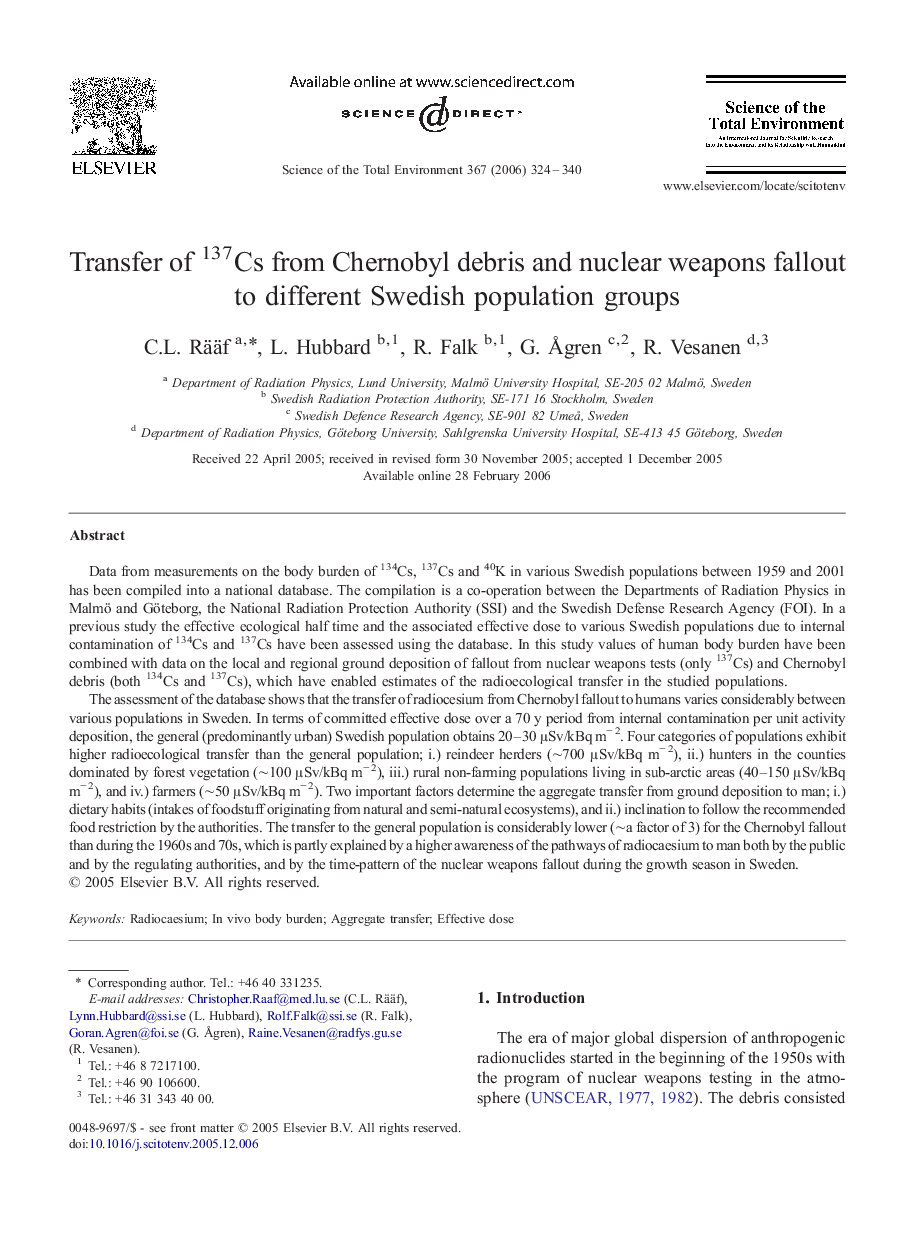| کد مقاله | کد نشریه | سال انتشار | مقاله انگلیسی | نسخه تمام متن |
|---|---|---|---|---|
| 4434006 | 1619970 | 2006 | 17 صفحه PDF | دانلود رایگان |

Data from measurements on the body burden of 134Cs, 137Cs and 40K in various Swedish populations between 1959 and 2001 has been compiled into a national database. The compilation is a co-operation between the Departments of Radiation Physics in Malmö and Göteborg, the National Radiation Protection Authority (SSI) and the Swedish Defense Research Agency (FOI). In a previous study the effective ecological half time and the associated effective dose to various Swedish populations due to internal contamination of 134Cs and 137Cs have been assessed using the database. In this study values of human body burden have been combined with data on the local and regional ground deposition of fallout from nuclear weapons tests (only 137Cs) and Chernobyl debris (both 134Cs and 137Cs), which have enabled estimates of the radioecological transfer in the studied populations.The assessment of the database shows that the transfer of radiocesium from Chernobyl fallout to humans varies considerably between various populations in Sweden. In terms of committed effective dose over a 70 y period from internal contamination per unit activity deposition, the general (predominantly urban) Swedish population obtains 20–30 μSv/kBq m− 2. Four categories of populations exhibit higher radioecological transfer than the general population; i.) reindeer herders (∼700 μSv/kBq m− 2), ii.) hunters in the counties dominated by forest vegetation (∼100 μSv/kBq m− 2), iii.) rural non-farming populations living in sub-arctic areas (40–150 μSv/kBq m− 2), and iv.) farmers (∼50 μSv/kBq m− 2). Two important factors determine the aggregate transfer from ground deposition to man; i.) dietary habits (intakes of foodstuff originating from natural and semi-natural ecosystems), and ii.) inclination to follow the recommended food restriction by the authorities. The transfer to the general population is considerably lower (∼a factor of 3) for the Chernobyl fallout than during the 1960s and 70s, which is partly explained by a higher awareness of the pathways of radiocaesium to man both by the public and by the regulating authorities, and by the time-pattern of the nuclear weapons fallout during the growth season in Sweden.
Journal: Science of The Total Environment - Volume 367, Issue 1, 15 August 2006, Pages 324–340